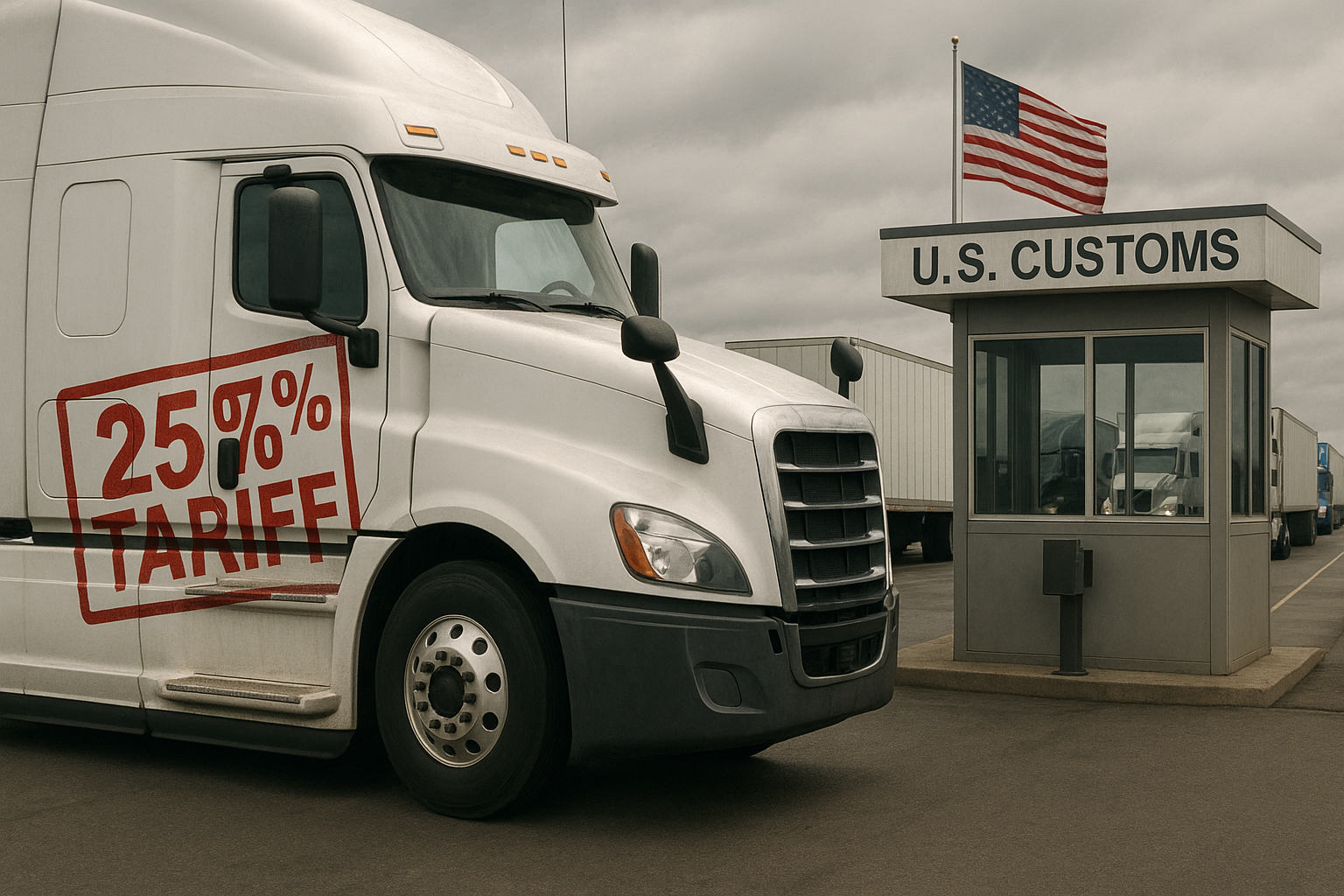The ghost of Tariff Man past has returned to haunt American commerce.
Former President Trump announced Monday that all medium and heavy-duty trucks entering U.S. borders will face a whopping 25% tariff starting November 2025—a move that's got economists wincing and truck manufacturers cautiously celebrating.
The decision follows a Commerce Department investigation launched this spring under Section 232 of the Trade Expansion Act, that peculiar legal mechanism that allows presidents to impose tariffs in the name of "national security." Because apparently, the safety of the republic now depends on the price tag of your average Peterbilt.
I've been covering trade policy since Trump's first administration, and this announcement has the familiar hallmarks of what became his signature economic approach—slap tariffs on imports, claim victory for American workers, and leave economists to sort through the aftermath.
"This is classic Trump," said one industry analyst I spoke with yesterday, who requested anonymity to speak candidly. "He's betting that voters in Michigan and Pennsylvania will remember the promise, not the economic consequences."
The timing here isn't subtle. With implementation conveniently scheduled for after the election, this announcement serves more as campaign rhetoric than immediate economic intervention. It's a promise wrapped in policy language—a specialty of politicians on both sides of the aisle, if we're being honest.
The U.S. imports about $13 billion worth of commercial trucks annually, with Mexico sending the lion's share across our southern border. American manufacturers like Paccar and Navistar still build plenty of trucks domestically, but (like everything else in modern manufacturing) they rely on global supply chains where parts and components play international hopscotch before assembly.
When news of the tariff hit, domestic truck makers saw their stocks tick upward—Paccar jumped 1.2% while Navistar's parent company enjoyed modest gains in European trading. The market, at least initially, is betting on scenario one: American truck makers win.
But here's the rub. History suggests we're more likely headed for door number two or three.
Look, there are basically three ways this plays out:
First, the rosy scenario: Tariffs protect American manufacturers, who expand operations, hire more workers, and a manufacturing renaissance blooms in the heartland. It's a lovely vision, especially if you're running for office.
Second, the doomsday take: These tariffs function as nothing more than a stealth tax on American businesses that need trucks to, you know, conduct business. Construction companies, delivery services, and the entire logistics sector face higher equipment costs, which eventually trickle down to consumers—otherwise known as voters.
Third, the cynical-but-probable outcome: American manufacturers raise their prices just below the tariff-adjusted imports, pocket the difference, and make minimal changes to production. Meanwhile, the complex web of global supply chains contorts itself into new shapes, creating inefficiencies throughout the system.
I watched this exact drama unfold during the steel tariffs of 2018. American steel producers initially cheered as prices jumped nearly 50%... until every downstream manufacturer that uses steel (which turns out to be practically everyone) started feeling the squeeze.
The national security justification deserves particular eyebrow-raising. Section 232 was intended for products genuinely critical to defense capabilities—think specialized metals for fighter jets, not delivery trucks bringing your Amazon packages. The creative stretching of this provision would make a yoga instructor envious.
(An aside: During Trump's first term, the exemption process for tariffs became its own peculiar Washington cottage industry, with companies hiring specialized lawyers to argue why their particular imports deserved special treatment. Expect a repeat performance.)
For investors trying to position portfolios in this brave new protectionist world, the calculation isn't about whether tariffs make good economic sense—most economists would argue they rarely do—but rather how to ride the resulting market distortions.
The broader implication here is... worrying. We're witnessing the continued unraveling of decades of global trade integration. When the world's largest economy embraces selective protectionism, other countries inevitably respond in kind. It's like watching a slow-motion divorce of the global economy, with all the messiness that entails.
In the end, tariffs offer politicians something precious—visible action they can point to. "See that factory? I protected it!" Meanwhile, the distributed costs to consumers and businesses throughout the economy remain largely invisible, spread across millions of transactions and thousands of balance sheets.
But hey, at least someone can claim they saved the American truck. Even if it means American truckers will be paying 25% more for them.
